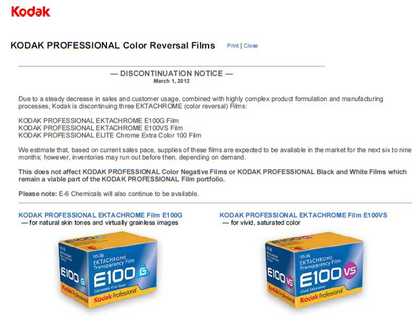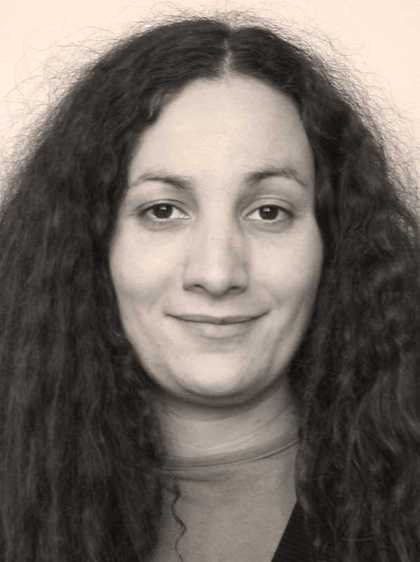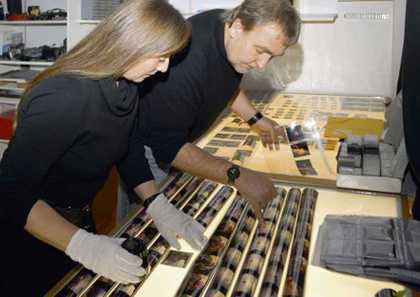Even in the heyday of slide technology it was a challenge to produce good quality and accurate slide duplicates; a task that demanded both patience and skill. This was due to the following four factors:
- the importance, where possible, of matching the stock used in duplication to the original stock manufacturer because of the difference in colour gamut and spectral sensitivity between slide stocks made by different manufacturers and because of the differences created by moving between developing processes. K-14 is the process used for Kodachrome stocks and E-6 is the process used for Ektachrome or Fujichrome duplicating stocks.
- the variation in the emulsion of different production batches of one and the same slide duplicating stock.
- instability of the chemicals inside the processing bath and the regularity with which this is monitored, adjusted and renewed.
- the time and knowledge required to improve colour filtration settings to adjust for these factors.
Owing to the commercial demise of analogue photography and specifically 35 mm slide transparencies, the majority of photographic laboratories are no longer producing slide duplicates nor processing 35 mm slide film, and those few laboratories that continue to offer this service are now only dealing with small quantities of material. These commercial drivers often mean that quality control is less stringent. In 2007, in response to this rapidly changing situation, time-based media conservation set out to re-evaluate which photographic laboratory in London was able to produce the best analogue duplicates. We restricted our search to London in order to avoid the risk of having to ship the master slides and also because we felt that is was highly desirable to build a professional relationship with a local laboratory that would help us to understand how the difficulties involved could be resolved.
Our assessment of these laboratories was based on:
- how well the colour filtration and exposure time was chosen.
- how much cropping of the margins of the image occurred. Cropping is always present when duplicating from an in-camera original but not when using first-generation duplicates slides. Evaluating the amount of cropping would show whether the set-up of the slide in the duplicating machine was rushed as it is less time-consuming to zoom in rather than to precisely capture the correct dimensions.
- whether the duplicating camera transported the film using pin-registration. This means that the width of each slide exactly matches the distance of eight perforation holes from outer edge to outer edge. The black bar between each image should be of equal width of c.2 mm and be centred between two perforations.
- whether there were any blemishes or micro-scratches. Drying marks are indicative of how the film has been attached to the hanger and micro-scratches can occur when the film is sleeved.
- the degree of variation that occurred in the processing bath over the duration of two weeks.

Drying marks caused by the film hanger at the bottom of the slide
The outcome of our test was disappointing and despite concerted attempts to challenge the laboratories to improve the precision of their colour accuracy, the results remained below acceptable standards for these most basic measures. It was as if the highly trained analogue eyes that once oversaw this process were no longer available; or perhaps morale was low as many experienced staff faced redundancy given the reduced demand for analogue photographic processes.
As part of a new approach it was decided that a time-based media conservator would need to learn how to operate a slide duplicator in order to gain first-hand experience of the challenges involved in producing accurate colour-matched slide duplicates. It was also considered valuable for conservation to regain some control of this task, given that the standards we were trying to attain did not sit well with the commercial constraints that governed what was possible within a photographic laboratory. In consultation with Tate’s photography department, who owned a Firenze ChromaPro 45 slide duplicator, Tate begun to duplicate the slides in-house and then send the exposed strip of slide film to an external photographic laboratory to be developed.
Rod Tidnam, a Tate photographer with more than 40 years’ experience, provided training on how to operate the ChromaPro. Rod taught me how to judge which colour filtration to use depending on the stock of the slides being duplicated, how colour correction filters would cancel each other out and what this means in relation to lens stops and exposure time. Within a short period of time, I felt that I understood this process and I began to see a clear improvement in the quality of the duplicates. This workflow served to minimise variation. Variability in the results cannot be completely eliminated as the colour processing of the slide film remains a significant factor due to the change in the processing bath from week to week. In order to minimise the impact of changing processing baths, the workflow was adjusted and the filtration tests were repeated weekly. It was clear at this point why the initial laboratory tests were unsatisfactory; this systematic workflow is extremely time-consuming and would be difficult to achieve within a commercial environment. However, although time-consuming, it was encouraging to have established a successful method of producing duplicate slide sets for the purposes of archiving and display.
Towards the end of 2009 the situation changed once again when Fuji discontinued its range of CDUII slide duplicating stock. This was rapidly followed by Kodak’s announcement that it would be ending the production of its entire range of duplicating stock Edupe in March 2010. This was not completely unforeseen as the price of the duplicating stock had steadily increased and its availability had become increasingly scarce. Noting these indicators, Tate had begun to create a small stockpile of Kodak Edupe, Fuji CDUII and Agfa Scala b/w negative film which can also be developed as reversal. Despite my initial success in mastering the slide duplication in-house, I was still an amateur and needed to use large amounts of this stock as part of the testing process. This was no longer viable, given the finite amount of duplicating stock now available. What followed was a year in which slide duplication came to a halt. This meant that there were no slide-based artworks available for display at Tate whilst alternative methods of slide duplication were sought.
At the beginning of 2011, Tate established a new collaboration with Activity, a small slide laboratory in south-west Germany, which is able to control the production processes much more tightly, and also understood the needs for accurate duplication when working with artworks.

Discontinuation notice regarding all remaining slide stocks by Kodak
www.kodak.com/global/en/professional/products/colorReversalIndex.jhtml
In the past, when a film stock has been discontinued, it would be phased out over a number of years, while the manufacturer established whether a market remained. However because analogue photography is no longer commercially supported, the discontinuation of specific stocks is no longer due to the launch of new products. Kodak Edupe Slide Duplication Film was always a professional specialist product hence was one of the first stocks to go. This was rapidly followed by in-camera stocks, marking the effective end of commercial support for 35 mm slide technology. In March 2012, the last three professional Kodak slide stocks E100G, E100VS and Elite Chrome Extra Colour 100 were discontinued with immediate effect as part of a direct response to Kodak’s filing for bankruptcy protection at the beginning of year.
It remains unclear how long the analogue photographic negative stocks for prints will remain in production but there is a suggestion that as long as the motion picture industry is shooting on film, there will be enough revenue to allow the continued production of a small range of still photographic films. However, it is notable that the industry is not making any clear public statements regarding its commitment to analogue still photography.
Resources
- Download a case study of acquiring and conserving Hilary Lloyd, Car Wash (PDF, 132Kb)
- Download the technical data for Kodak Professional Ektachrome Duplicating Film EDUPE (PDF, 87Kb)
- Download the technical data for Fujichrome Duplicating Film CDU Type II (PDF, 87Kb)
- Download the technical data for Agfa Professional Films (PDF, 248Kb)


